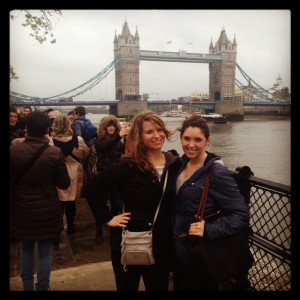We’ve been across Europe these past three weeks, and I don’t think I’ve been as shocked or as interested in the exhibits as I have been in Germany. I mentioned in one of my previous posts that Bayeux, France has the unique, authentic ability to remember the War since so much fighting took place in Normandy. If that is true for France then that idea definitely extends to Germany as well. I was pleasantly surprised to find that many of the exhibits we’ve been to in Germany deal with the war in an upfront manner; they don’t dawdle around the topic of genocide. Rather the museums have exhibits that expand upon the Nazi regime and their deep- rooted racism and anti-Semitism in order to explain how the tragedy of the Holocaust happened.
Perhaps the most powerful manifestation of this lesson hit me when we visited the Sachsenhausen concentration camp. It was first established in 1936 to house political prisoners but then expanded to include a variety of prisoners including Jews, anti-Socials, and other people who were considered racially inferior. Walking the grounds of the camp, there wasn’t as much left to see since a majority of the camp was destroyed in bombing raids, but the things that were left standing were eerie and terrifying. Walking through the stuffy dormitories where people were forced to live and sleep and the old kitchen and infirmary enabled me to at least create a vision in my head of what conditions were like back then. I don’t think it is possible for us to grasp the amount of human degradation that the Nazi regime instigated through the use of their concentration camps, but I think visiting the site where so much tragedy happened was a step toward understanding the suffering of so many people.
My head hurt the whole time I was there. Everywhere I looked I knew that years ago people were walking through this camp, starving, exhausted, and maltreated. I knew that many of the people imprisoned in this camp would end up dying there, most likely losing their family members in a similar fashion. I also knew that as terrible as this camp was, there were so many more just like it functioning throughout Germany and Poland, holding and eventually killing millions of people. It’s enough to make anyone feel sick.
And so nearing the end of our journey we’re faced with one of the most important components of the war, and one that I think is the most visible in Germany. How is it possible that a civilized nation such as Germany could be responsible for the extermination of millions of people? The men that committed these crimes were intellectuals after all with degrees from prestigious schools, which is perhaps one of the most terrifying aspects of this genocide. It’s a difficult question to answer, one that I think involves a variety of components based on what I’ve learned during my time abroad.



